Introduction to Sedum Transplantation
An overview of sedum plants and their popularity in gardens due to their hardiness and low maintenance. Imagine a plant that thrives with minimal fuss, laughs in the face of drought, and carpets your garden with color. That’s sedum for you! These succulent beauties are the garden’s equivalent of a good friend – the kind that sticks by you through thick and thin, demanding little yet giving so much. From the rolling rock gardens in the English countryside to the heat-blasted hills of California, sedums are ambassadors of resilience and diversity, making them an all-time favorite among green thumbs and novice gardeners alike.
Introduction to their transplantation needs and best practices. Now, let’s talk about ‘moving day’ for your sedum. Unlike picking up stakes on a whim and relocating on a personal level, transplanting these steadfast succulents at the right moment is crucial. It’s like finding the sweet spot for the perfect cuppa – timing is everything. But fear not! We’ll guide you through the garden of wisdom to ensure your sedum’s big move goes off without a hitch, whether you’re aiming for aesthetic accents or a complete overhaul of your green sanctuary.
Sedums are not just survivors; they’re thrivers. They’re the botanical embodiment of “bloom where you’re planted”—or, in this case, replanted. Before we dig deeper into the soil of knowledge, let’s take a moment to appreciate these versatile stunner’s up close. 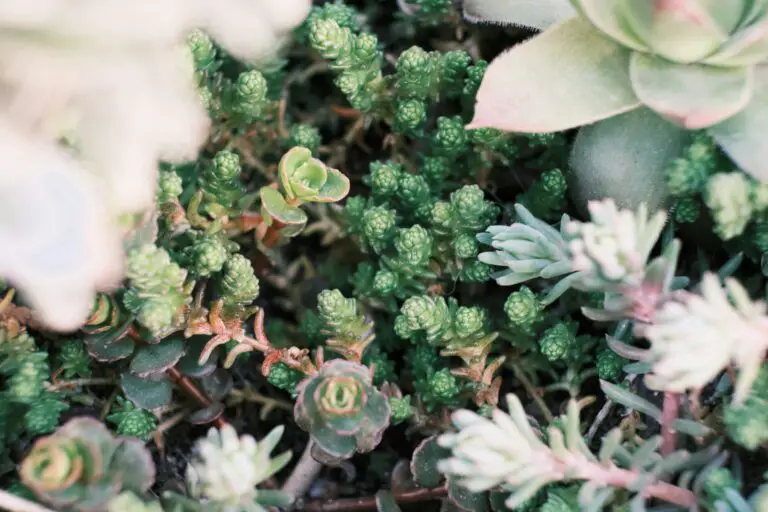
For more on giving your stonecrops the VIP treatment they deserve, including insights on their perennially pleasing nature, take a look at this handy guide from the experts at BBC Gardeners World Magazine. And when the time comes to expand your knowledge on creating an even more stunning garden landscape, be sure to explore our comprehensive tips for vibrant garden accents. Let’s grow together!
Understanding Sedum’s Growth Habits
Have you ever watched a magician pull a rabbit out of a hat? Growing sedum, those plucky little succulents, is a bit like that—it’s all about the sleight of hand, or rather, the sleight of season! Knowing when to twirl your gardening wand for transplanting sedum can mean the difference between a flourishing bed of these beauts and a lackluster performance.
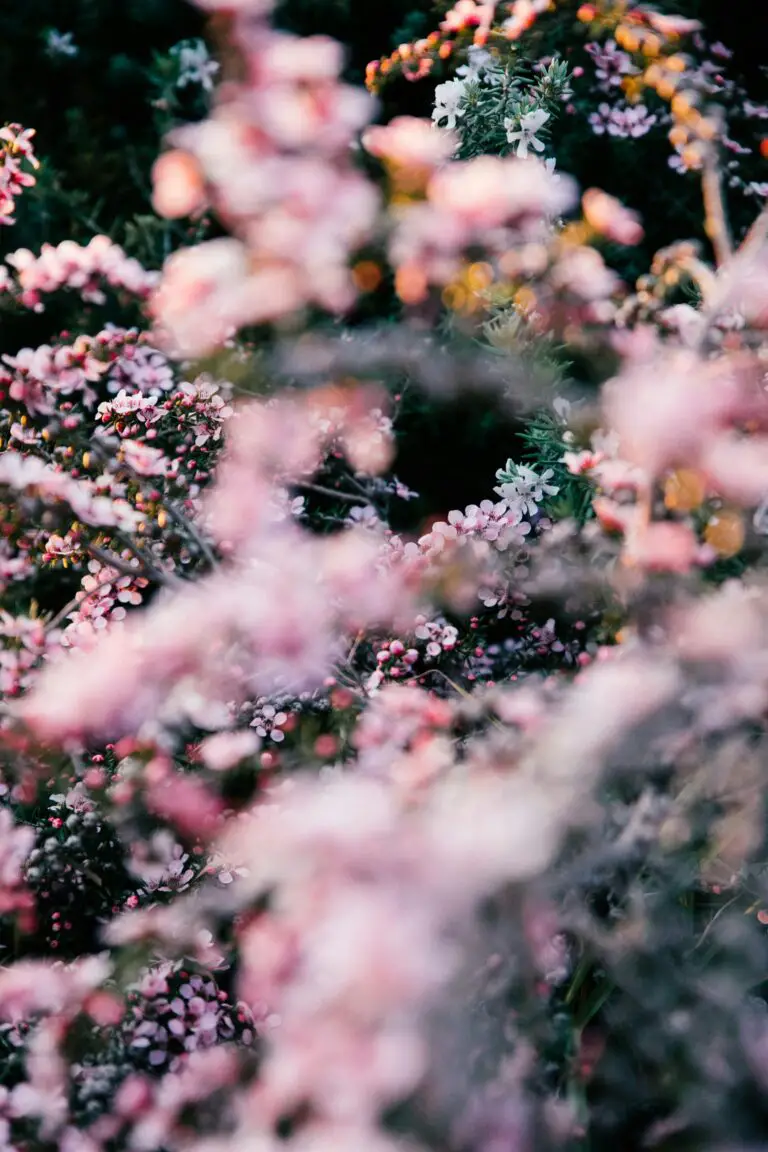
Like clockwork, sedum plants go through a fascinating lifecycle. In spring, they break ground like a ballerina at dress rehearsal, poised and ready to leap. By summer, they’re in full bloom, stealing the spotlight with vibrant colors and attracting admiring pollinators—nature’s own standing ovation. But come autumn, they bow out, letting their foliage put on a show of reds and golds before the curtain of winter drops.
The best time to give your sedum a new stage? Spring and autumn are your anchor dates. Imagine it’s spring: the sedum is just awakening, stretching out its roots with mild enthusiasm—this is your cue to swoop in and relocate them. Alternately, as fall paints the garden in fiery hues, sedum’s energy recedes back into its roots, making it the perfect intermission for transplanting without the drama of shock.
Don’t just take my word for it—let’s get into the nitty-gritty. During spring, sedum’s root system is in reboot mode, energetically uncommitted and thus, forgiving to disturbance. And when fall rolls around, the cooling soil helps ease the plant’s transition, setting the stage for a robust start come next season. It’s about working with nature’s rhythms to ensure your gardening show goes off without a hitch.
Take Ellen, a seasoned planter from Portland. She swears by an autumn transplant, claiming her sedum retains the spotlight in her rock garden year after year. It’s this harmony with the sedum’s natural cadence that leverages transplanting success.
While you’re here, take a moment to discover even more insights on crafting the perfect sedum production for a show that always gets rave reviews!
In essence, to master the art of sedum relocation, you must first become a student of their growth habits. Dance to the beat of their natural cycles, and you’ll have a garden that echoes with encores of lush, abundant growth.
Key Factors in Choosing When to Transplant Sedum
Embarking on the sedum transplant voyage? Bravo! You’re not just moving a plant; you’re redefining your garden’s charm. But the question pulsates: when to shift these succulent beauties? The timing can be as delicate as the tendrils of an autumn bloom. Sedum whispers secrets to those who listen, and their whispers regard the weather patterns, plant maturity, and soil conditions.
Let’s talk weather patterns first. Imagine a sweltering summer day – your sedum is parched just like you would be at a mid-afternoon barbecue. Not the ideal transplant time, right? Or consider a frosty winter morning, where the ground is as unyielding as a frozen dessert. Again, not a friend for transplantation. The sweet spot? A mild spring or a gentle autumn day, where the earth is moist and welcoming, and the sedum can thrive in its new home with minimal shock.
Progressing to plant maturity, it’s like picking the perfect time to teach a toddler to swim; there’s a moment when they’re just ready. Transplant young sedum before they become the Hercules of your garden – robust and deeply rooted. The juvenile phase is when they’re malleable, ready to adapt with the right nudge. Sedums, at this stage, can rebound from the move with a zest similar to a young adventurer starting a journey.
Now, let’s sift through the soil conditions. Loose, airy, and well-draining soil is the red carpet for transplanting any sedum. It’s the equivalent of settling into a bed with freshly laundered sheets; it feels right, it feels good. If the soil conditions are akin to wet concrete or a parched desert, consider amending the soil or waiting for conditions to improve. After all, you wouldn’t plant roots in a swamp or a drought – so why should your sedum?
Consider this guide to sedum planting for more detailed insights into understanding this resilient, yet surprisingly tender genus. Tapping into the rhythm of nature’s tempo is key. And with the right timing, your sedum will not just survive the transition; they’ll flaunt their succulence in vibrant defiance of the relocation.
We get it, though – reading is one thing, seeing is another. For a visual take on the process, here’s a video with some top-notch advice on sedum care, including transplanting tips:
How Seasonal Changes Affect Sedum Transplantation
When you’re looking to shuffle those succulent sedums to a new spot in the garden, timing is everything! And let me tell you, not all seasons are created equal when it comes to relocating these hardy plants. Let’s dig into the nitty-gritty of how each chapter of the year impacts the transplanting tale of sedums.
Spring: The Season of New Beginnings
The zest of spring is like a roll-out-the-red-carpet moment for sedum transplantation. Why? It’s the season where life renews, and sedums are no exception. Coming out of their winter slumber, the plants are bursting with the urge to grow. This is your green light to grab that spade because the moist soil and cooler temperatures make it the ideal time to give your sedums a fresh residence without stressing them out.
Summer: Proceed with Caution
Alright, imagine this: It’s a sweltering summer day, the sun is beating down, and you’re sweating buckets. Feels tough, right? Now think of sedums. Summer is their siesta time—they’re just trying to survive the heat. If you must move them during these scorching months, opt for an overcast day, do your dance early in the morning or late in the evening, and ensure they get plenty of water. It’s not the gold standard transplanting time, but with extra TLC, your sedums can still strut in their new location.
Fall: The Sweet Spot for Sedum Shifting
Fall is like the encore after a great performance; it’s your second-best bet for transplanting sedums. The soil temperature is still warm enough to promote root development, and the cooler air minimizes water loss from the leaves. In the real world, it’s analogous to moving houses on a cool, crisp day: invigorating and fresh without being overburdened by extreme conditions. Think of autumn as nature’s perfect balance for transplanting – not too hot, not too cold, just the perfect climate for your sedum’s roots to take hold.
Winter: Sedum’s Slumber Party
Winter is when sedums hit the snooze button. They’re conserving energy and resting, much like we burrow into our cozy homes during the chilly months. If you’re in a mild climate, you could potentially transplant during the colder days—think of it as gently tucking them into their new bed. But beware, frosty conditions can be risky, and you wouldn’t want to shock these succulent beauties. It’s typically better to wait until the frost is a memory before making the move.
Ready to see some sedum action? Check out this insightful video on transforming leggy sedums into luscious groundcovers and witness the wonders of sedum revitalization!
“`html
Step-by-Step Guide to Transplanting Sedum
So, you’ve got a sedum that’s outgrown its current spot, or maybe you’re redesigning your garden and you want to give your beloved stonecrop a new home. Whatever the reason, transplanting sedum can be a smooth process if done at the right time and with the right touch—just like a well-choreographed dance! Let’s dig in and get our hands dirty with a step-by-step guide to transplanting these resilient yet delicate perennials.

First things first—timing is everything. The best time to relocate your sedum is in the early spring or early fall. This is when the plants are either coming out of or preparing for dormancy, making them less susceptible to transplant shock. Plus, the cooler temperatures and typically more frequent rainfall help the sedum to settle in happily in its new location.
Now, let’s talk technique. Start by gently digging around the base of your sedum, giving it a wide berth to avoid damaging the root system. Imagine you’re an archaeologist unearthing a treasure—because, in a way, you are! Next, lift the plant carefully from the ground. If it’s a large clump, you might need an extra set of hands or even a gardening fork to help hoist it out.
Here’s where you can practice your division skills. Sedum plants are great candidates for division, which not only helps to control their size but also invigorates their growth. What’s more, you’ll get more plants for free! Gently tease apart the roots to create smaller clumps, making sure each new section has a good amount of roots attached. It’s like giving each piece of the puzzle its own potential to bloom into a full picture.
Before replanting, consider amending the soil in the new location with compost to give your sedum a boost of nutrients. Place each new clump into a hole that’s just the right size—not too tight, not too loose—then backfill with soil, tamp down gently, and give it a good drink of water. It’s a bit like tucking in a child: you want it to feel snug and secure, ready for a good night’s rest and sweet dreams of growth.
Finally, keep an eye on your newly transplanted sedum for the first few weeks. Regular watering, especially during dry spells, will ensure that the roots establish themselves and that your stonecrop thrives in its new home. For more detailed information, here’s a handy guide to help you along the way.
“`
Post-Transplant Care for Sedum
Just like a toddler taking their first steps, newly transplanted sedum plants need a watchful eye and a helping hand to thrive in their new spot. The importance of proper post-transplant care cannot be overstated; it’s the make-or-break moment for your sedum’s future success. Let’s dive into the essential tips to shepherd your sedum through this vulnerable phase.
First things first: water is your sedum’s best friend post-transplant. Imagine running a marathon; you’d be pretty parched, right? Your sedum feels the same after the upheaval of transplantation. Provide consistent moisture without drowning the roots. A good rule of thumb is to keep the soil evenly moist but not swampy. Envision yourself as a bartender for your plants, mixing the perfect cocktail of hydration.
Sunlight, too, is a critical ingredient for your sedum’s cocktail of happiness. These hardy plants love the sun, but just like us at the beach, sometimes they need a little shade. For the first couple of weeks, protect your transplanted sedum from the midday sun. You can picture them lounging under an umbrella, sipping on that moisture cocktail you’ve provided. This temporary shade gives them the chance to focus on root development without the stress of a sunburn.
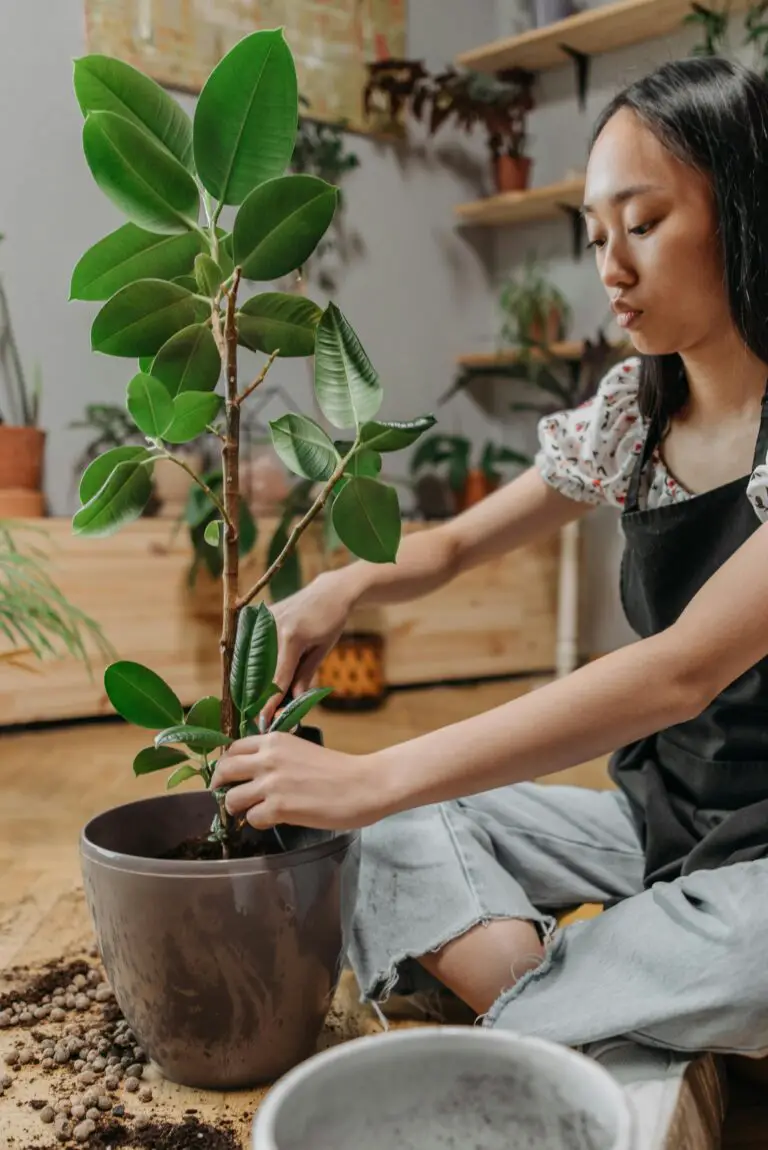
Last but not least, let’s talk defense. Your sedum’s immune system is a bit compromised post-transplant, much like ours when we’re stressed or tired. That makes them more susceptible to diseases and pests. Be the guardian of your garden and keep a keen eye out for any signs of trouble. If you spot invaders or infections early, you can take action before they turn your sedum’s relocation into a retreat.
Remember, patience is key. Much like nurturing a child or tending to a friendship, providing consistent care and attention to your sedum will pay off with robust growth and vibrant blooms. Your role as a gardener is not just to plant but to protect and persevere. Nurture your sedum through the post-transplant period, and watch as it lays down roots and establishes itself as a cornerstone of your garden tapestry.
Common Mistakes to Avoid When Transplanting Sedum
Transplanting sedum plants might seem straightforward, but even the greenest thumbs can run into trouble without proper knowledge. Let’s dig into some common blunders gardeners make when they uproot these succulents and share strategies to keep your sedum smiling.
Timing Troubles
One frequent error is misjudging the right time for transplanting. Sedum prefers cool weather for its move. Spring or early fall, when the plant is not in full bloom, is ideal. Transplanting during a heatwave or when your plant is bursting with flowers can strain the sedum, leading it to wilt under stress rather than settling into its new location.
Rooting Out Mistakes
Another pitfall? Being rough with the roots. Sedum roots are sturdy yet require gentle handling. Avoid shaking off all the dirt in an attempt to ‘clean’ the roots. Some soil left on the roots can help reduce shock, maintain moisture, and ease the transition into new soil. Remember, it’s a transplant, not a treasure hunt!
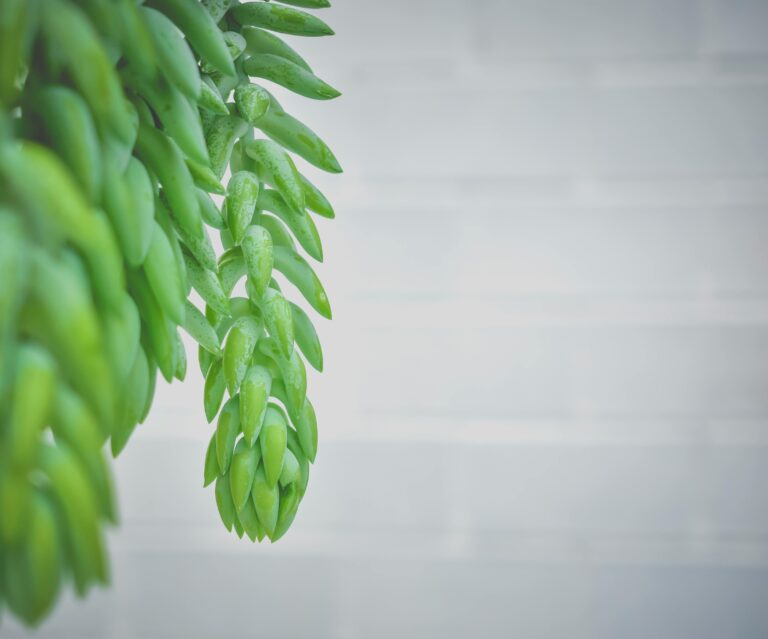
Water Woes
Overwatering right after transplanting is a common mistake. Just because your sedum is settling into a new home doesn’t mean it needs to swim there. These drought-tolerant plants require less water than you might think. Allow the soil to dry between watering to encourage strong root growth.
Soil Slip-ups
Not all soil is created equal, and sedum plants favor well-draining soil. A classic error is replanting in heavy, clay-rich soil that retains too much water, leading to root rot. To avoid a muddy mess, opt for a mix with plenty of perlite, sand, or gravel for happy, healthy sedum.
Sunlight Snafus
Sedums love the sun, and a common oversight is not providing enough of it after a transplant. If you’ve relocated your sedum to a shady spot, you might as well hang a ‘no vacancy’ sign for your sun-seeking succulent. Ensure your transplant site gets plenty of light, mimicking the sedum’s natural love for basking in the sun’s glory.
Now that you’re armed with these tips to avoid rookie mistakes, you’re all set to give your sedum the start it deserves in its new patch of the garden. Keep these points in mind, and your sedum is sure to flourish in its fresh abode!
Frequently Asked Questions
Are you pondering the perfect timing for transplanting your resilient sedum? Or perhaps you’re curious about the particulars of post-transplant watering rituals? Allow us to illuminate the ins and outs of sedum transplantation, tackling common queries with the clarity of a sunny day in the garden.
When is the Best Time to Transplant Sedum?
Timing is everything, and sedum is no exception. These hardy succulents thrive when transplanted during the cool embrace of early spring or during the waning warmth of early fall. Avoid the sweltering heat of summer when the stress can be too intense for your plant’s roots to handle with grace. Think of it as moving day for your green friend—choose a day with mild weather for a smooth transition.
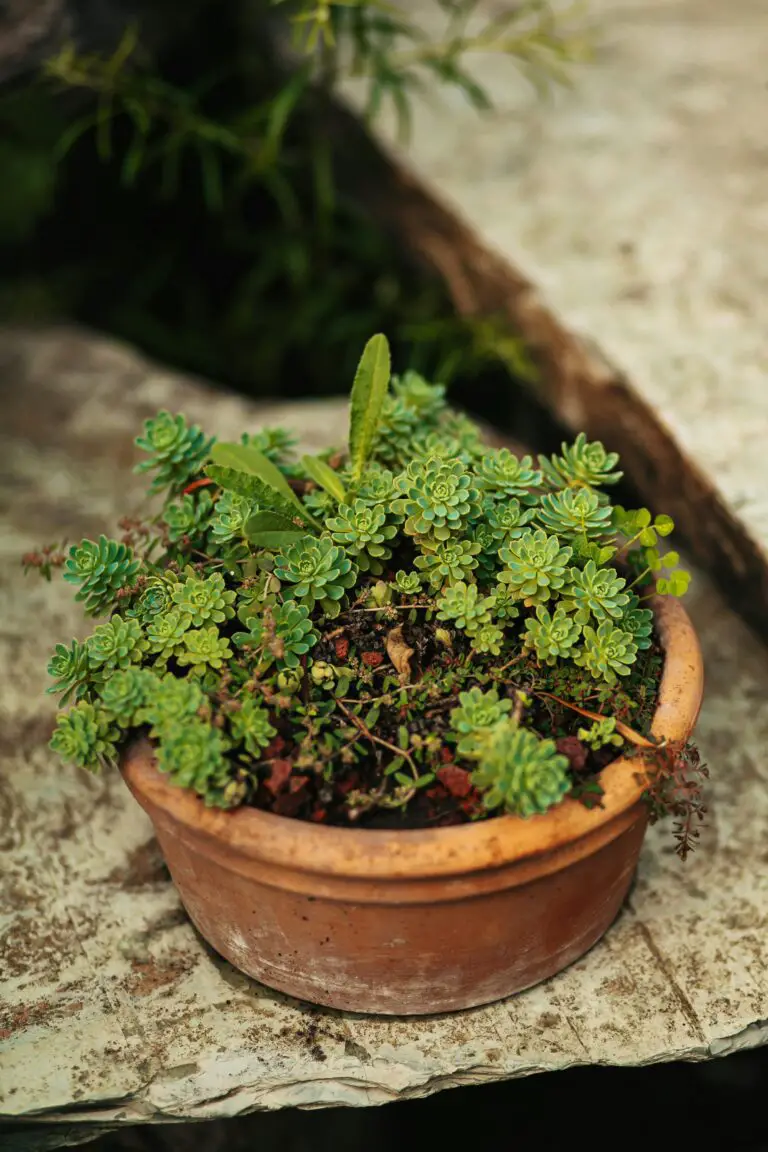
Watering After Transplanting: A Delicate Balance
Once your sedum is snug in its new location, your watering can shouldn’t be too far behind. But hold your horses—overwatering can be the death of good intentions. Begin with a modest drink to help the roots ease into their new abode. Subsequently, only water when the soil feels dry to the touch. Picture a light rain, not a torrential downpour, to bring your sedum back to life.
Maximizing Sun Exposure
Sedum is a sun worshipper, basking in the full glory of its rays. When relocating, aim to grant your plant a spot where sunshine is abundant. However, just like us, sedum can get sunburned if introduced to intense light too quickly. Gradually heighten the exposure to sunbeams, and watch as your sedum stretches contentedly towards the sky.
Division Techniques for Proliferation
Dividing sedum is a cinch, allowing you to multiply your garden’s charm with ease. Early spring’s gentle conditions are ideal for this endeavor. Using a sharp spade or knife, separate the parent plant into several sections, ensuring each has a fair share of roots and rosettes. Then, transplant these divisions into prepared soil beds or pots, with dreams of a sedum sanctuary soon to bloom!
Embrace these moments of garden magic, where each question answered leads to a flourishing sedum spectacle in your very own slice of nature’s paradise.


